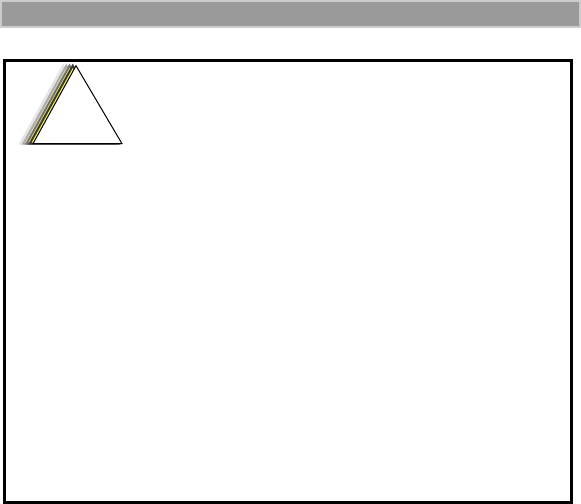Motorola Solutions 89FT5793 Hand Held Transmitter User Manual
Motorola Solutions, Inc. Hand Held Transmitter
Contents
- 1. Instruction manual
- 2. Amended Users Manual
Amended Users Manual

1
i1000plus User’s Guide
For the Safe and Efficient Operation of Your Radio,
Observe these Guidelines:
Your radio product contains a transmitter and a receiver. When it is ON,
it receives and transmits radio frequency (RF) energy. The radio
operates in the frequency range of 806 MHz to 870 MHz and employs
digital modulation techniques. When you use your radio, the system
handling your call controls the power level at which your radio
transmits. The output power level typically may vary over a range
from 0.0024 Watts to 0.6 Watts.
Exposure To Radio Frequency Energy
Your Motorola Radio Product is designed to comply with the following
national and international standards and guidelines regarding exposure
of human beings to radio frequency electromagnetic energy:
• United States Federal Communications Commission, Code of
Federal Regulations; 47 CFR part 2 sub-part j
• American National Standards Institute (ANSI) IEEE. C95. 1-1992
• National Council on Radiation Protection and Measurements
(NCRP). Report 86
• International Commission on Non-Ionizing Radiation Protection
(ICNIRP) 1998
• National Radiological Protection Board of the United Kingdom, GS
11, 1988
• Verband Deutscher Elektrotechniker (VDE) DIN-0848
• Department of Health and Welfare Canada. Safety Code 6
To assure optimal radio performance and make sure human exposure to
radio frequency electromagnetic energy is within the guidelines set forth
in the above standards, always adhere to the following procedures:
When placing or receiving a phone call, or using the group or private
call functions with the Group/Private Speaker OFF (muted speaker icon
visible in the display), hold the radio as you would a telephone. Speak
directly into the mouthpiece and position the antenna up and over your
shoulder.
SAFETY AND GENERAL
INFORMATION
IMPORTANT INFORMATION ON SAFE AND
EFFICIENT OPERATION.
READ THIS INFORMATION BEFORE USING YOUR
INTEGRATED MULTI-SERVICE PORTABLE RADIO.

2
Safety and General Information
When using the radio as a traditional two-way
radio while making group or private calls with the
Group/Private Speaker ON (no speaker icon
visible in the display), hold the radio in a vertical
position with the microphone one to two inches
away from the lips.
For body-worn operation, the antenna should be
kept at least one inch from the body when
transmitting. A carry holder with a belt clip is
provided with the radio for body-worn use.
When using the data feature of the radio, with or without an accessory
cable, position the radio with the antenna of the radio product at least
one inch (2.5 cm) away from the body.
DO NOT hold the antenna when the radio is “IN USE”. Holding the
antenna affects call quality and may cause the radio to operate at a
higher power level than needed.
Interference to Medical and Personal Electronic Devices
Most electronic equipment is shielded from RF energy. However,
certain equipment may not be shielded against the RF signals from your
wireless phone.
Pacemakers
The Health Industry Manufacturers Association recommends that a
minimum separation of six inches (6") be maintained between a
handheld wireless phone and a pacemaker to avoid potential
interference with the pacemaker. These recommendations are consistent
with the independent research by and recommendations of Wireless
Technology Research.
Persons with pacemakers should:
• ALWAYS keep the phone more than six inches from their pacemaker
when the phone is turned ON.
• not carry the phone in a breast pocket.
• use the ear opposite the pacemaker to minimize the potential for
interference.
• turn the phone OFF immediately if you have any reason to suspect
that interference is taking place.
Hearing Aids
Some digital wireless phones may interfere with some hearing aids. In
the event of such interference, you may want to consult your hearing aid
manufacturer to discuss alternatives.
Other Medical Devices
If you use any other personal medical device, consult the manufacturer
of your device to determine if it is adequately shielded from external RF
energy. Your physician may be able to assist you in obtaining this
information.

3
i1000plus User’s Guide
Turn your phone OFF in health care facilities when any regulations
posted in these areas instruct you to do so. Hospitals or health care
facilities may be using equipment that could be sensitive to external RF
energy.
Interference to Other Electronic Devices
RF energy may affect improperly installed or inadequately shielded
electronic operating and entertainment systems in motor vehicles.
Check with the manufacturer or representative to determine if these
systems are adequately shielded from external RF energy. Also check
with the manufacturer of any equipment that has been added to the
vehicle.
Turn your radio off before boarding any aircraft to prevent possible
interference to aircraft systems. Regulations of the United States Federal
Aviation Administration prohibit use when the plane is in the air and
require you have permission from a crew member to use your radio
while the plane is on the ground.
Safety and General
Use While Driving
Check the laws and regulations on the use of telephones in the area
where you drive. Always obey them.
When using the phone while driving, please:
• Give full attention to driving and to the road
• Use hands-free operation, if available
• Pull off the road and park before making or answering a call if
driving conditions so require.

4
Safety and General Information
OPERATIONAL WARNINGS
POTENTIALLY EXPLOSIVE
ATMOSPHERES
Turn off your two-way radio when you are in any area with a
potentially explosive atmosphere, unless it is a radio type especially
qualified for use in such areas (for example, Factory Mutual
Approved). Sparks in a potentially explosive atmosphere can cause an
explosion of fire resulting in bodily injury of even death.
Note: The areas with potentially explosive atmospheres referred to
above include fueling areas such as: below decks on boats; fuel or
chemical transfer or storage facilities; areas where the air contains
chemicals or particles such as grain, dust or metal powders; and any
other area where you would normally be advised to turn off your
vehicle engine. Areas with potentially explosive atmospheres are
often, but not always, posted.
Batteries
Do not replace or charge batteries in a potentially explosive
atmosphere. Contact sparking may occur while installing or removing
batteries and cause an explosion.
BLASTING CAPS AND AREAS
To avoid possible interference with blasting operations, turn off your
radio when you are near electrical blasting caps, in a blasting area, or
in areas posted: “Turn off two-way radio”. Obey all signs and
instructions.
FOR VEHICLES EQUIPPED WITH AN AIR BAG
Do NOT place objects, including both installed and portable wireless
equipment, in the area over the air bag or in the air bag deployment
area. An air bag inflates with great force. If in-vehicle wireless
equipment is improperly installed and the air bag inflates, serious
injury could result.
!
W A R N I N G
!

5
i1000plus User’s Guide
Cleaning Instructions
Clean the external surfaces of the unit with a damp cloth, using a mild
solution of dishwashing detergent and water. Some household cleaners
may contain chemicals that could seriously damage the unit. Avoid the
use of any petroleum-based solvent cleaners. Also, avoid applying
liquids directly on the unit.
Antenna Considerations
Use only the supplied or an approved antenna. Unauthorized antennas,
modifications, or attachments could impair call quality, damage the
radio, or result in violation of local agency regulations.
OPERATIONAL
CAUTIONS
Damaged Antennas
Do not use any portable two-way radio that has a damaged antenna. If
a damaged antenna comes into contact with your skin, a minor burn
can result.
Batteries
All batteries can cause property damage and/or bodily injury such as
burns if a conductive material such as jewelry, keys, or beaded chains
touch exposed terminals. The conductive material may complete an
electrical circuit (short circuit) and become quite hot. Exercise care in
handling any charged battery, particularly when placing it inside a
pocket, purse, or other container with metal objects.
!
C a u t i o n